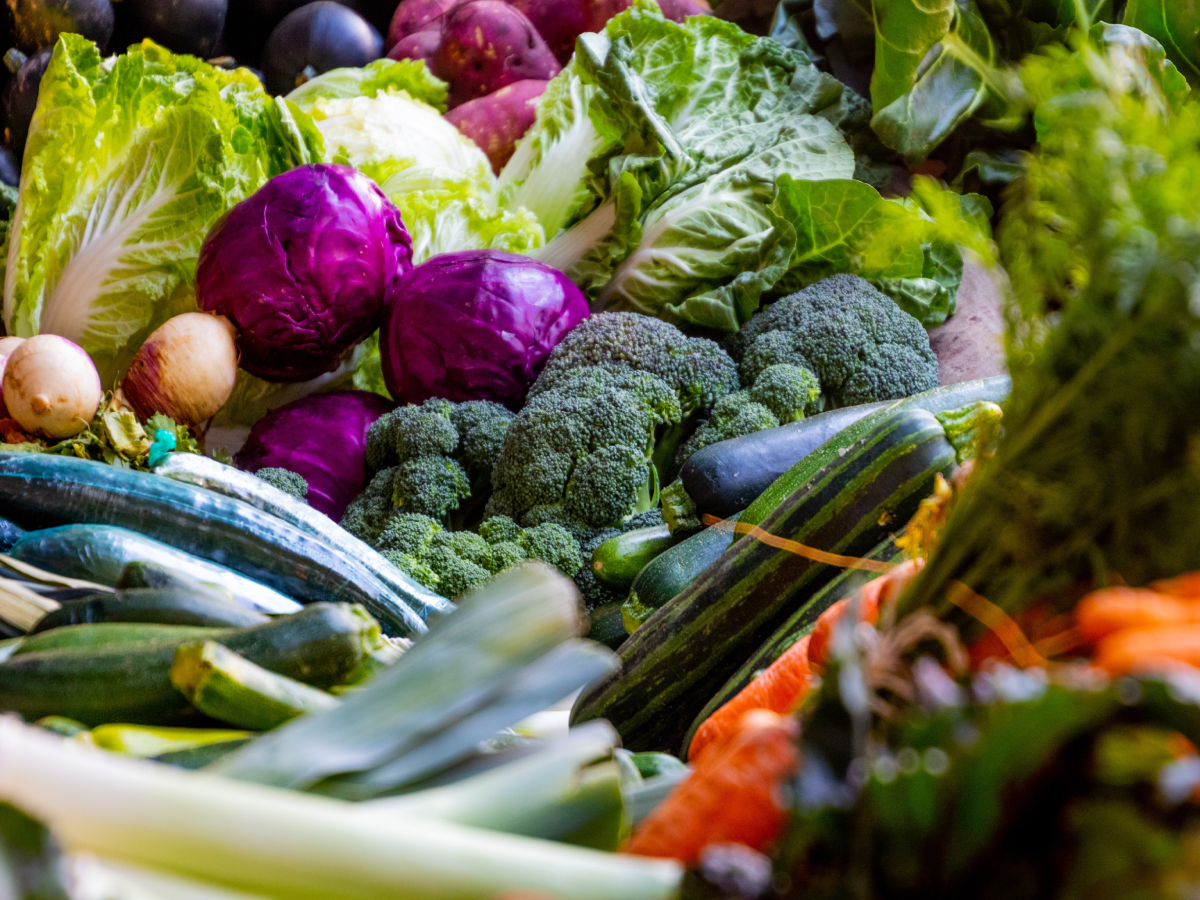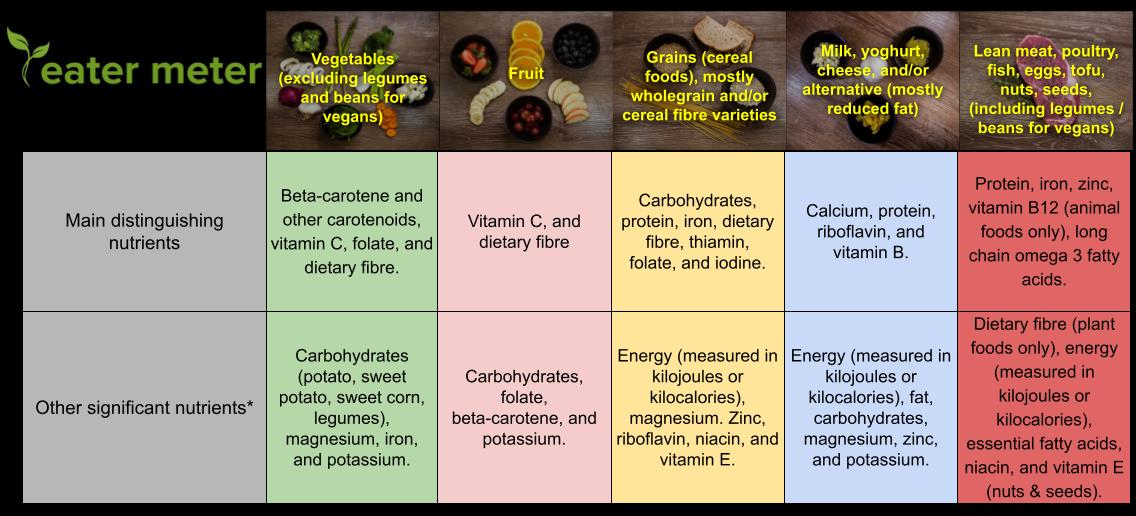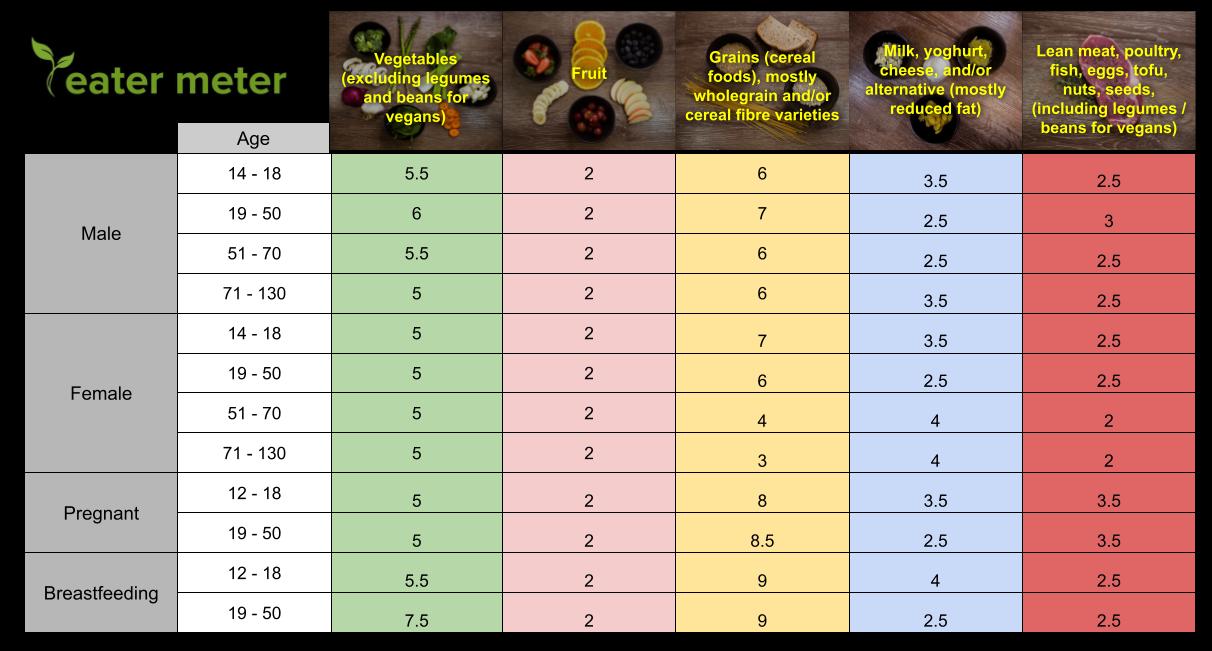CATEGORIES
What are the Food Groups? An Introduction and More
Jul 02,2021

You have probably heard of what food groups are. But just how important are they to know? In a nutshell, knowing the food groups is a great way to categorise food generally associated with particular nutritional, health or environmental characteristics. Just by knowing the basic food groups, you will be able to gauge specific nutrient profiles you may or may not be eating. Additionally, you will be able to prioritise certain food groups in your diet which are lacking or have a lower environmental impact than others.
According to the Australian Dietary Guidelines (2013) (find out more about the guidelines here), there are five (5) major food groups which are categorised by the general type of nutrients they are providing to you. Nutrient profiles, as opposed to food types (such as meat, vegetable, fruit etc.), are used to distinguish between a food group and how much of each food group we should be eating. See Table 1 below taken from the Australian Dietary Guidelines (2013).
Table 1 - Nutritional Characteristics of The Five Food Groups

* Some foods from The Five Food Groups can contribute significant amounts of sodium.
Reference: Table based off of Table 1 in the National Health and Research Council - Australian Dietary Guidelines (2013).
Knowing just the basic food groups is a great way to gauge how healthy or environmentally friendly your diet is, without getting caught up in the nitty-gritty of macronutrients, micronutrients and carbon footprints of certain foods. For someone concerned with how healthy and environmentally friendly their diet is, knowing the food groups is essential knowledge. Combining this knowledge with knowing how many of each Food Group you should be eating according to the latest science will help to improve your dietary choices for the better.
How much should you eat from each group?
There are two parts to answering that question. Firstly, within each of The Five Food Groups mentioned above, there is a certain number of recommended "servings" depending primarily on age and gender. A serving from each of the food groups is recommended from an energy (kilojoule/calories) basis, as opposed to weight (g). Table 2 below details precisely what counts as a "serve", and how many serves you should be eating based on your age and biological sex.
Table 2 - Recommended Servings According to Biological Factors

Reference: Table based off of Table 1 in the National Health and Research Council - Australian Dietary Guidelines (2013).
As an example of how to use this table, if you are a female between the ages of 19-50, it is recommended that you have 5 servings of vegetables. But how much is a serving of vegetables? Or a serving of anything? Read below to find out!
What is a “Serve” of each Food Group?
Here are some estimates regarding different serving sizes taken directly from the Australian Dietary Guidelines (2013). Note, servings are based on energy density, (kilojoules, or calories), as opposed to a per gram basis.
What is a serve of vegetables (100–350kJ)?
A serve of vegetables is approximately 75g:
• ½ cup of cooked green or orange vegetables (for example broccoli, spinach, carrots or pumpkin)
• ½ cup cooked, dried or canned beans, peas or lentils (preferably with no added salt)
• 1 cup of green leafy or raw salad vegetables • ½ cup of sweetcorn
• ½ medium potato other starchy vegetables (for example sweet potato, taro or cassava)
• 1 medium tomato
What is a serve of fruit (350kJ)? A serve of fruit is about 150g:
• 1 medium apple, banana, orange or pear
• 2 small apricots, kiwi fruits or plums
• 1 cup diced or canned fruit (with no added sugar)
• or occasionally as a substitute for other foods in the group
• ½ cup (125ml) 100% fruit juice (no added sugar)
• 30g dried fruit (for example 4 dried apricot halves or 1½ tablespoons of sultanas)
What is a serve of grain (cereal) foods (500kJ)?
• 1 slice of bread (40g)
• ½ medium roll or flat bread (40g)
• ½ cup cooked rice, pasta, noodles, barley, buckwheat, semolina, polenta, bulgur or quinoa (75–120g)
• ½ cup cooked porridge (about 120g)
• 2/3 cup wheat cereal flakes (30g)
• ¼ cup muesli (30g)
• 3 crispbreads (35g)
• 1 crumpet (60g) or a small English muffin or plain scone (35g).
*Choose mostly wholegrain and/or high cereal fibre varieties
What is a serve of lean meat and poultry, fish, eggs, tofu, nuts and seeds, legumes/ beans (500–600kJ)?
• 65g cooked lean meat (about 90–100g raw weight of beef, veal, lamb, pork, kangaroo or goat)
• 80g cooked poultry (about 100g raw weight of skinless chicken or turkey)
• 100g cooked fish fillet (about 115g raw weight) or small can of fish
• 2 large eggs (120g)
• 1 cup (150g) cooked or canned legumes/beans such as lentils, chick peas or split peas (preferably with no added salt)
• 170g tofu
• 30g nuts, seeds or peanut or almond butter or tahini or other nut or seed paste (no added salt)
What is a serve of milk, yoghurt, cheese and alternatives (500–600kJ)*?
• 1 cup (250ml) fresh, UHT long-life or reconstituted powdered milk or buttermilk
• ½ cup (120ml) evaporated milk
• 2 slices, or 4x3x2cm piece (40g) hard cheese
• ½ cup (120g) ricotta cheese
• ¾ cup (200g tub) yoghurt
• 1 cup (250ml) soy beverage or beverages made from rice or other cereals which contain at least 100mg of added calcium per 100ml
*Choose mostly reduced-fat varieties
Note: If you do not consume any foods from this group, try the following foods, which contain the same amount of calcium as a serve of milk, yoghurt, cheese or alternatives (note: the energy content of some of these serves may be higher so take account of this in the overall diet)
• 100g (about ½ cup) almonds with skin
• 45g sardines, canned in water (about 1–2 sardines)
• 75–80g (about 1 /3 cup) canned pink or Australian salmon with bones
For more information, check out the Australian Dietary Guidelines here.
How Do The Five Food Groups relate to Your Health and the Environment?
The Five Food Groups formulated by the Australian Dietary Guidelines (2013) relate to your health as the consumption of the right type and amount of servings from each food group has been correlated with various health benefits throughout the scientific literature. Luckily for us, the Australian Dietary Guidelines (2013) have summarised this information which was used to create Table 2 above.
However, what the Australian Dietary Guidelines (2013) does not mention how each food from each food group which makes up your diet impacts the environment. Each food you consume has an impact on the environment, and we must try to do our best to minimise this impact. Having a diet that complies with the Australian Dietary Guidelines (2013), and is mindful of the effects food has on the environment is a diet that will not only improve your health, but reduce your impact on the the environment. At Eater Meter, we believe that this is the diet of the future, and that we should be actively trying to transition towards it.
A Diet of the Future? Eater Meter?
If you are interested in transitioning your diet to a healthier and more environmentally friendly diet, consider subscribing to Eater Meter. What is Eater Meter? Well, it is a web-based scoring system which will give feedback on your food log submissions regarding how healthy and environmentally friendly your diet is. If this is something you care about, please go to our website here.
